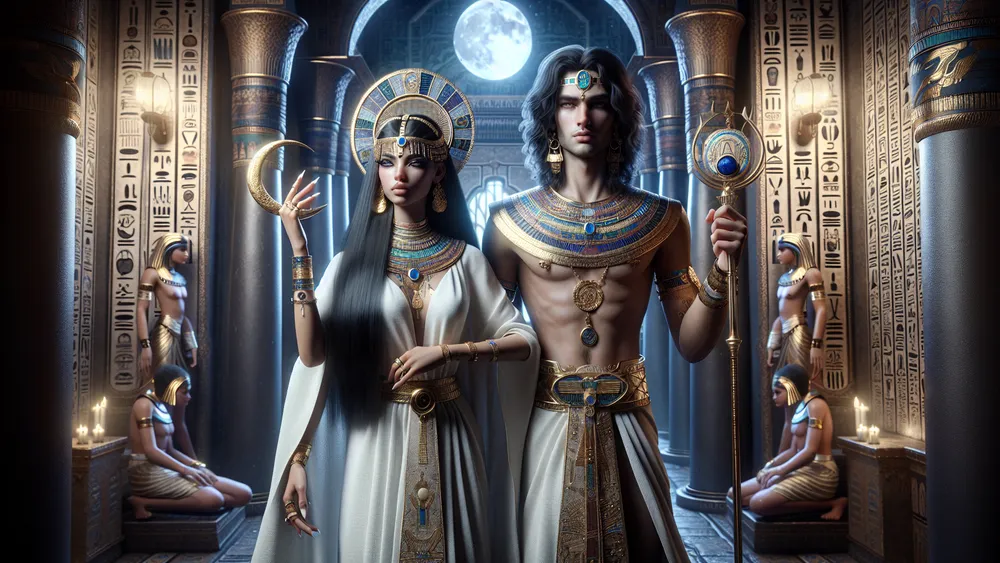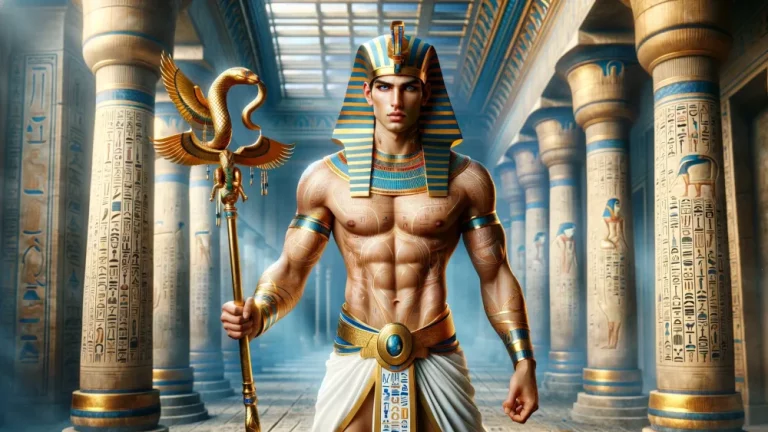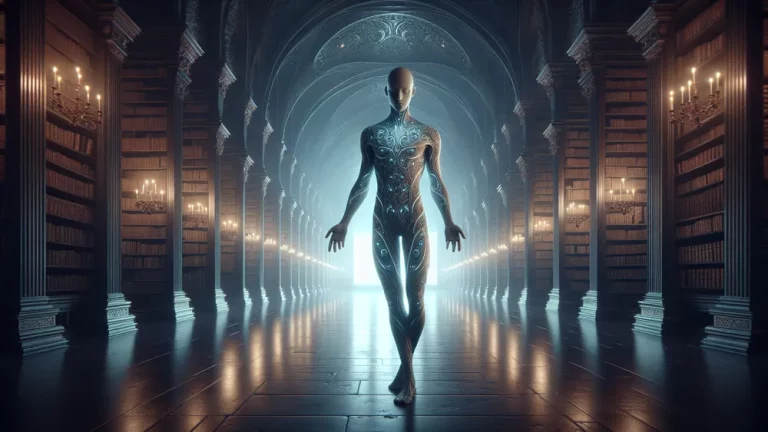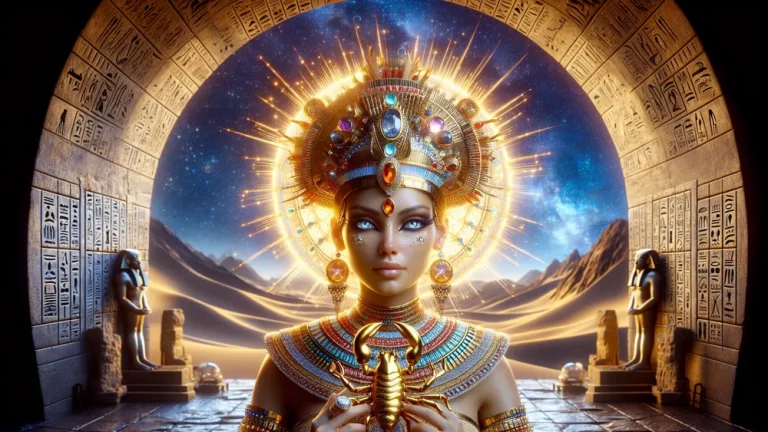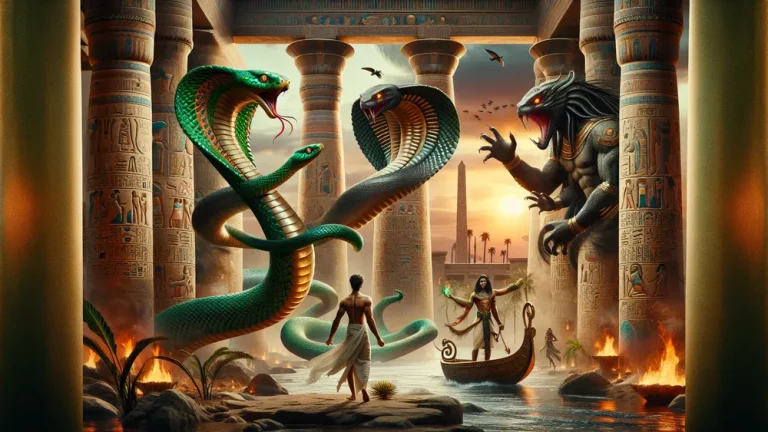The Princess Of Bekhten: Egyptian Mythology Story
Here, we’re looking at one of old Egypt’s amazing tales: the story of the Princess of Bekhten and her amazing rescue by the god Khonsu. Think of a story; it’s about a royal family in big trouble, it feels like something you’d see in movies, or like an old fairy story.
Key Points:
- The Princess of Bekhten myth is an ancient Egyptian tale of divine intervention and healing by the god Khonsu.
- Bekhten, a region in the Near East, plays a crucial role in the story’s setting and historical context.
- The royal family of Bekhten, including the Princess and her father, the Prince, are central characters facing a health crisis.
- Egyptian doctors and magicians fail to cure the Princess, leading to the summon of Khonsu, the moon god known for healing.
- Khonsu’s exorcism ritual successfully heals the Princess, emphasizing the power of gods and the importance of faith in ancient Egyptian culture.
- The myth of the Princess of Bekhten has influenced modern storytelling, inspiring narratives of divine intervention and overcoming adversity.
In this post, you will find where Bekhten was, meet the royal family, and know about the princess who is very sick. We talk about what the Egyptian doctors and magicians did to make her better, and then calling Khonsu, the moon god who heals. Then we go through Khonsu going to Bekhten and his big exorcism to fix her, you will see why this tale meant a lot in old Egypt.
The Princess Of Bekhten: Overview and Key Facts
| Key Point | Description |
|---|---|
| Story Origin | Ancient Egyptian story, particularly from the New Kingdom time. |
| Where It Happened | Bekhten, place thought to be in the Near East, maybe modern-day Syria. |
| Main People | The Princess of Bekhten, the Prince of Bekhten (her father), and the god Khonsu. |
| Main Problem | An evil spirit makes the princess sick, and local things do not fix her. |
| God’s Help | The god Khonsu comes from Egypt to do an exorcism and make the princess well. |
| Why It Matters | It shows why godly help and the part gods have in health in old Egyptian belief. |
| Old References | The story is written on the Bentresh Stela, an old Egyptian object. |
| What Happens in the End | Khonsu’s exorcism fixes the princess, bringing back peace to Bekhten. |
| How It Lasts | The story shows how strong Khonsu is and has changed later stories and art. |
The Princess Of Bekhten Saved By Khonsu
With the facts you have about the Princess of Bekhten, we will see more about the myth itself, first looking at Bekhten’s background.
The Full Story
The story of the Princess of Bekhten is an interesting one from ancient Egyptian mythology, full of divine help, magic, and healing. This story is found on a stone tablet from the time of Pharaoh Ramses II and shows how humans and gods interacted in ancient Egyptian belief.

On a military campaign in Bekhten, Pharaoh Ramses II meets the prince of Bekhten, who offers his eldest daughter in marriage as a gesture of alliance and goodwill. The princess, whose name is not mentioned in the inscriptions, is brought to Egypt and given the Egyptian name Neferure, meaning “The Beauty of the Sun.”
When they return to Egypt, Neferure becomes part of the royal household, living in the palace and adapting to Egyptian customs. Her presence shows the strengthening of political and cultural ties between Egypt and Bekhten, but years later, during a big festival for the god Amun, a messenger comes from Bekhten with urgent news for Ramses II. Bentresht is very sick.
Bentresht, Neferure’s younger sister, has a mysterious illness that local healers and priests cannot cure. Because of this, Ramses II consults the priests of the temple of Khonsu, the moon god known for healing. Therefore, the pharaoh orders that a statue of Khonsu be sent to Bekhten to help Bentresht. The priests conduct elaborate rituals to call the spirit of Khonsu into the statue, and this gives it divine power.

The journey of Khonsu’s statue to Bekhten is long and difficult, taking several months. Upon its arrival, the people of Bekhten show great respect, hoping for a cure. The statue is placed in Bentresht’s chamber, and immediately, the spirit of Khonsu begins to work. The priests of Bekhten perform rituals and prayers, asking the god to remove the evil force making Bentresht sick.
The spirit of Khonsu, through the statue, faces the demon in Bentresht. The inscriptions vividly describe the exorcism, with the demon being overpowered by Khonsu’s divine power. The demon reveals itself and eventually leaves Bentresht’s body, restoring her health. People in Bekhten are very happy and relieved when Bentresht gets better and is no longer sick.
The prince of Bekhten wants to keep the statue of Khonsu forever, offering lots of riches and treasures in return. However, the priests of Egypt, knowing the importance of returning the divine presence to their homeland, request the statue’s return. The prince agrees, and the statue is sent back to Egypt, with gifts and thanks.

Upon the statue’s return to Egypt, Ramses II and the priests of Khonsu hold a grand ceremony to welcome the god back to his temple. They offer sacrifices and perform rituals to honor Khonsu, celebrating the god’s successful intervention in Bekhten. The story ends with the reaffirmation of Khonsu’s power and the strong bond between Egypt and Bekhten, strengthened through divine assistance and mutual respect.
The story of the Princess of Bekhten shows the importance of divine favor and the protective role of the gods in ancient Egyptian society. It also highlights how Egyptian religion and culture reached beyond its borders to help and heal friends in faraway places. The tale is a powerful testament to the connected lives of gods and humans in the rich tapestry of Egyptian mythology.
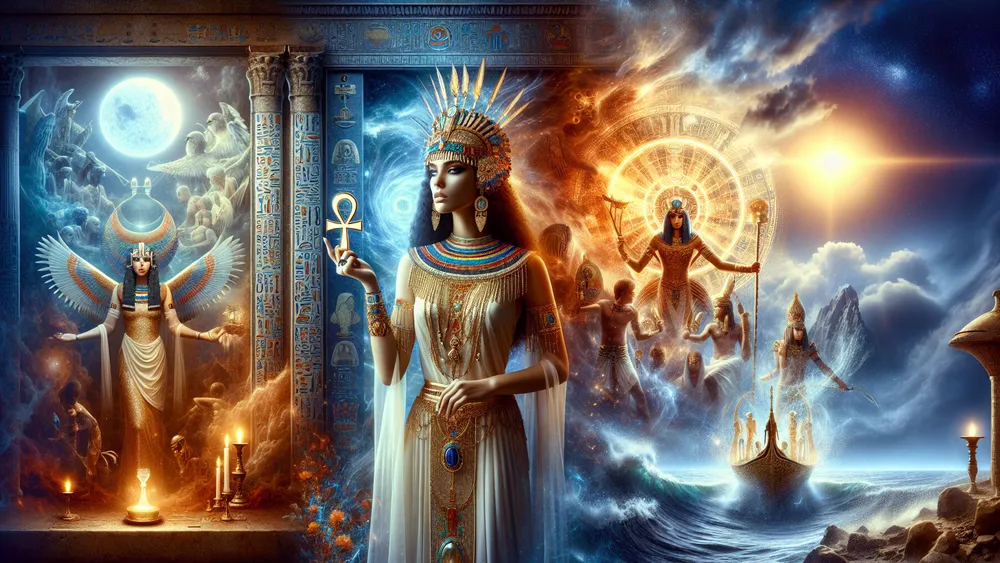
FAQs
1. What is the significance of the Princess of Bekhten myth in ancient Egyptian culture?
The significance of the Princess of Bekhten myth in ancient Egyptian culture lies in its illustration of divine intervention and the power of gods like Khonsu in healing and exorcism.
2. How did the god Khonsu become associated with healing and exorcism?
The god Khonsu became associated with healing and exorcism through his role as a lunar deity who was believed to have the power to drive away evil spirits and cure ailments.
3. Are there any historical records that support the events described in the myth?
There are no historical records that support the events described in the myth of the Princess of Bekhten.
4. How has the myth of the Princess of Bekhten influenced modern storytelling?
The myth of the Princess of Bekhten has influenced modern storytelling by providing a rich narrative that explores themes of divine intervention, healing, and the battle between good and evil.

